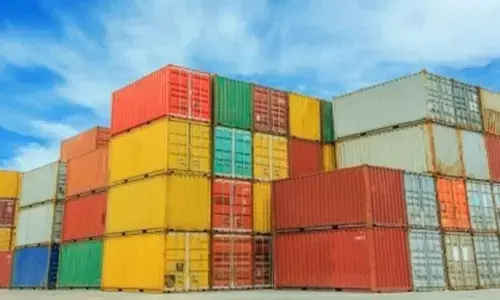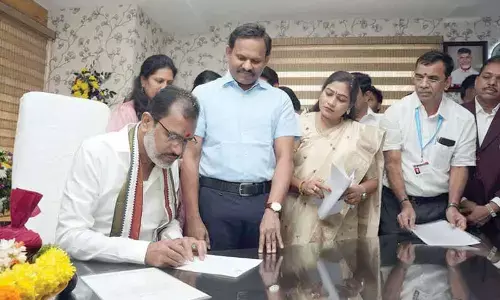A story of hope seeking sustainability
 A story of hope seeking sustainability
A story of hope seeking sustainabilityFifteen years ago, in 2005, when the Accredited Social Health Activist (ASHA) programme was introduced into India’s health care system, as part of the National Rural Health Mission, it was a tentative beginning
Fifteen years ago, in 2005, when the Accredited Social Health Activist (ASHA) programme was introduced into India's health care system, as part of the National Rural Health Mission, it was a tentative beginning.
Only the States referred to as Empowered Action Group, now known as the "high-focus States" of Bihar, Uttar Pradesh, Madhya Pradesh, Rajasthan, Jharkhand, Odisha, Chhattisgarh, the North-Eastern States, and the hilly States of Uttarakhand, Himachal Pradesh and Jammu & Kashmir and the tribal areas of a few States, were eligible.
Barely four years later, in 2009, most remaining States opted to select ASHA, including the State of Kerala, where its role in the COVID response is a story that has been told and retold since the pandemic broke in January this year.
The ASHA, a cadre of nearly a million women, combining the roles of activist/social mobiliser, community care provider and link worker, are present in nearly every village/hamlet and urban slum of the country.
The ASHA programme represents the implementation at scale, of a significant governance reform in India. The success of the ASHA rests on a combination of factors: community-led selection, rootedness in community level structures that are aligned to local self-government institutions, a dedicated support and training system, on the job mentoring, and payment through a blended mechanism that is a combination of fixed and performance linked payments.
The day to day work of the ASHA is the nuts and bolts of the work of the health system- for a system that ends at the lowest facility- the Sub Health Centre, now being transformed to the Health and Wellness Centres, under Ayushman Bharat.
The ASHA represents a crucial community link and her rich knowledge about her community has enabled the last mile delivery of health care and intensive involvement in COVID and non-COVID related services.
The central and salient feature of the ASHA programme is its maturity, achieved through a combination of local innovation, translated into policy articulation and programmatic action. ASHAs have built up social capital over the years and exercised their agency in a myriad ways.
This is a programme where the ASHA's individual motivation and agency joined forces with a conscious collective solidarity to find expression in the response to the ongoing COVID-19 pandemic.
It is no exaggeration to say that notwithstanding a widespread network of health facilities, it is the presence of an ASHA in every village that enables nearly universal reach, as we have seen these past few weeks.
The urban ASHA launched in 2013 as part of the National Urban Health Mission, also mandates that an ASHA be selected from slum and slum like habitations to better serve the needs of the urban poor and is now evolving to the level of the rural ASHA programme.
While there have been instances such as the earthquake in Uttarakhand or the cyclone in Odisha, a pandemic of this magnitude, spread across the country is the first, that all ASHAs have encountered. In the early phase of COVID-19 preparedness and containment, ASHAs, with Anganwadi workers and ANMs played a critical role.
While the role of other frontline workers must be lauded, the ASHA is currently the only worker who is resident in the village and undertakes regular home visits to serve health care needs of key population sub- groups - from new-borns to the elderly.
From house to house surveys, to handwashing demonstration, sewing and distributing masks, creating awareness and now undertaking community surveillance, ASHAs are spearheading case identification with the field teams and are at the forefront of the response to COVID in their communities.
In addition to COVID 19 activities, ASHAs have are championing the non-COVID related essential care, by ensuring continued support for mothers and children, for those with TB, and people with chronic diseases.
Her pre-existing relationship has enabled her to reach out to the community, including convincing women about the need to access safe delivery or to ensure vaccination for themselves and their children when services were resumed.
ASHAs in several States continue to undertake home visits for palliative care, visiting the elderly, in addition to the regular home visit for the new-born, home based young childcare, and providing support and counsel to the pregnant woman or lactating mother.
Potentially exposing themselves to the infection and risking their own families, their relentless efforts in combating COVID 19, such as, from delivering drinking water to those in-home quarantine in Meghalaya's villages, to ensuring home-based new-born care in Rajasthan, or distributing medicines for chronic diseases in Assam, ASHAs have demonstrated a new sense of confidence and faith.
In many States, ASHAs are also part of block and district COVID response teams, giving them a high level of credibility and commensurate responsibility.
There have been arguments that engaging the ASHA in COVID 19 efforts would be risky, and they should limit their activities to raising awareness in the community. There have been instances of violence against ASHA and other health workers, often invoked by fear, but equally, there has been swift action by States to address this and assure ASHAs of safety.
The government has also taken legal action to address violence against all Health Care workers, including ASHA, by enacting an Ordinance (Epidemic Diseases (Amendment) Ordinance, 2020) under the Epidemic Disease Act, 1897in the end of April, 2020, which imposes monetary penalty and imprisonment for those found guilty.
Additionally, the medical safety of the frontline warriors is being ensured by repeated reminders to States, to guarantee that masks and other protective equipment are provided to ASHAs, which has also yielded results.
In the early phases, the provision of PPE was not uniform in districts and blocks, but States are making every effort to ensure safety of their health workers.
Adding extra incentives for the ASHA, ensuring that other incentives are paid on time, and including them in the PM's Insurance Scheme for Health Workers Fighting COVID-I9 has been a small acknowledgement of the country to the invaluable support and unstinting commitment of the ASHA.
Applauding the efforts of the ASHA in supporting the health system during the pandemic is critical. Like all reforms, the ASHA programme too has challenges, and has produced variable and uneven effects across the country.
Nonetheless, it is incumbent upon the health system to sustain and strengthen the ASHA programme. Enhancing her credibility and dignity, ensuring her safety and protection and building her capacity, surely need to be done.
(The authors are Secretary, Ministry of Health and Family Welfare, Government of India and Executive Director, National Health Systems Resource Centre, Government of India respectively)


















